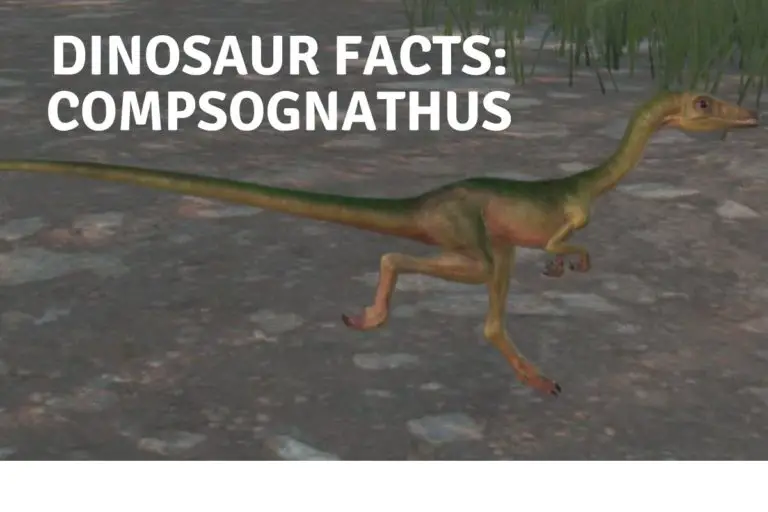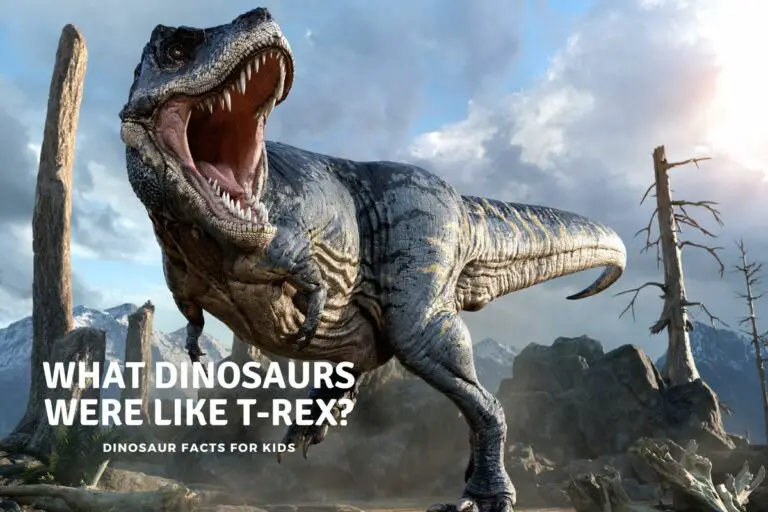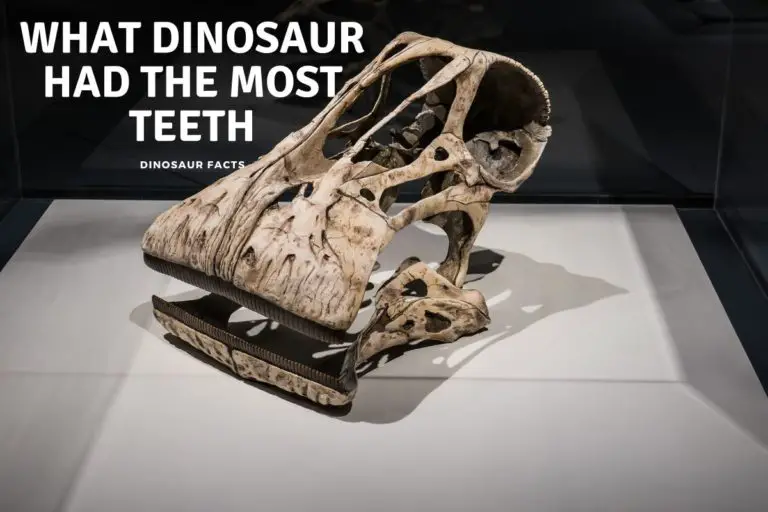How Big Was Brachiosaurus?
Brachiosaurus is one of the most well-known dinosaurs due to its appearance in Jurassic Park and world and as a Sauropod, a long necked dinosaur, it was certainly hard to miss! When discovered it was thought to to be one of, if not the, largest dinosaurs, and although challengers to that title have been discovered it was still a massive dinosaur. Just how big brachiosaurus was we look at below.
Brachiosaurus measured between 18 and 22 meters in length (59 – 72 feet), at between 9 and 13 metres in height ( 30 to 43 feet). Weight estimates have a larger range from 28 – 46000 kg or 61-101000 Lbs. Its size is estimated by comparing to similar dinosaurs in the same family like Giraffatitan.
In this article, we are going to take a longer look at just how big Brachiosaurus really was. To do this we will explore its anatomy, its physical features then how scientists estimate its size and weight.

What was The Brachiosaurus
Brachiosaurus was, as you will have noticed from any movie in the Jurassic Park or World series. a huge dinosaur. it was fortunately for the characters in those movies a herbivore. In reality it lived during the Late Jurassic period, approximately 154 to 150 million years ago.
With its long neck, small head, large body and long tail ( though not as long a tail as other species like diplodocus) made it a distinctive member of the the Sauropod family and for a long while the Brachiosaurus was one of the largest members of this family. However with the discovery of later, and larger fossils, like argentinosaurus, and Patagotitan it headed down the list of super sized dinosaurs. though in a list like that it was still a giant of a dinosaur.
It was known for having longer forelimbs than its hind limbs which raised it head even higher than on that long neck and helped it stand taller to grab those leaves at the very top of the forest trees it lived among. Howe was that neck, and how big was the brachiosaurus is what we explore next.
How Big was Brachiosaurus?
Despite our warning that Brachiosaurus has been out ranked in recent years by some other members of the sauropod family it doesn’t take away the fact that it was still one of the largest animals to have ever walked the earth.
Brachiosaurus measured between 18 and 22 meters in length (59 – 72 feet), at between 9 and 13 metres in height ( 30 to 43 feet). Weight estimates have a larger range from 28 – 46000 kg or 61-101000 Lbs. Its size is estimated by comparing to similar dinosaurs in the same family like Giraffatitan.
Table 1: Estimated Length, Height and Weight of Brachiosaurus
| Dinosaur | Length (m/f) | Height at Head (m/f) | Weight (kg/lbs) | Period it lived |
|---|---|---|---|---|
| Brachiosaurus | 18-22m / 59-72 feet | Up to 9-13m / 30-43ft | Up to 28000 – 46000 kg/ 61,000 – 10100 lbs | Late Jurassic period (154-150 million years ago) |
We have the numbers on the size of brachiosaurus above, twice actually, but there is a little more to these than jsut the numbers, so for those who want to know more we go into a few more details on the height, length and weight of Brachiosaurus in the section below.
Length of Brachiosaurus
As we mentioned above Brachiosaurus is estimated to have been between 18 to 22 meters (59 to 72 feet) in length, still making it one of the longest dinosaurs ever discovered. it would have likely been longer but for its unusually longer forelimbs, in comparison to its hind limbs.
Though these were useful to enable it to raise its head higher they also meant it did not need such a long tail to balance out its long neck. This effectively made it shorter than perhaps it would be if it didn’t have such long legs !
Height of Brachiosaurus
The actual height as most people view it ( to the top the the head) is difficult to be certain about in all sauropods, and in fact most dinosaurs. to measure it it requires us to know how the dinosaur carried its self, whether it had its head high or more usually lower to the ground.
In sauropods this is compounded by the fact that both high and low postures actually have advantages. High means the top of the trees are accessible, and low means they can swing those heads over a wide arc and not move their bodies to get to food. Our thoughts are that if those long necks could be used for both then dinosaurs probably did use them for both depending on where they were and what plants were around them !
However, estimates based on skeletal reconstructions suggest that brachiosaurus stood between 6 to 7 meters (20 to 23 feet) tall at the hip and up to 13 meters (43 feet) tall with its head held high.
Weight of Brachiosaurus
Estimating the weight of Brachiosaurus is challenging due to the incomplete nature of the fossil record. It has been compared to another member of the brachiosaur family the giraffatitan which has more complete fossil records, but was less bulky or well built. So although the estimates are still large actually brachiosaurus was still likely to be a little heavier than those.
Brachiosaurus is estimated to have weighed between 28000 – 46000 kg/ 61,000 – 10100 lbs, which is comparable to other giant sauropods like Apatosaurus and Diplodocus. It may have gone up to 58,000 kg (120,000 lbs+) but evidence isn’t quite there yet for this.
However, it is still far outweighed by the heaviest known dinosaur, Argentinosaurus, which is estimated to have weighed between 60,000 to 100,000 kilograms (130,000 to 220,000 pounds). Though the average was about 73,000 kg (160,000 lbs)
Comparison with other dinosaurs
The only dinosaurs to really compare in terms of size with Brachiosaurus were the sauropods.
Brachiosaurus was a member of that sauropod family, which also includes other large herbivores like Diplodocus and Apatosaurus, dreadnoughtus, Argentinosaurus and many others. However, it did have several unique features that set it apart from these other dinosaurs, such as its long neck and front legs.
We have put some of the size comparisons in the table below but it is important to remember that these are just estimates.
| Dinosaur Name | Length (m) | Length (ft) | Hip Height (m) | Hip Height (ft) | Weight (kg) | Weight (lbs) | Lived During |
|---|---|---|---|---|---|---|---|
| Brachiosaurus | 18-22 | 59 -72 | 6-7 | 20-23 | 28,000 – 58,000 | 60-120000 | Late Jurassic |
| Argentinosaurus | 30-35 | 98-131 | 7-8 | 23-26 | 60,000-100,000 | 130,000-220,000 | Late Cretaceous |
| Dreadnoughtus | 26-28 | 85-95 | 6-7 | 20-23 | 22,000 – 48,000+ | 50,000-110,000 | Late Cretaceous |
| Diplodocus | 30 | 95 | 5-7.5 | 15-25 | 23,000- | 50,000lbs | Late Jurassic |
| Apatosaurus | 21-23 | 69-75 | 5-6 | 13-16 | 16,000 – 22,000 | 35,000-49,000 | Late Jurassic |
| Tyrannosaurus rex | 12-13 | 39-41 | 4-6 | 13-20 | 5,000-8,000 | 11,000-18,000 | Late Cretaceous |
Sauropods were some of the largest animals to have ever lived on Earth, and the table provided highlights some of the most well-known members of this group. Although commonly accepted as the largest, Argentinosaurus, there are discoveries all the time of new dinosaurs, and even some stories of truly huge specimens like those in the image below,
though they can not be conclusively be proven yet, so the list of largest ever dinosaurs and if any will be found to be larger than a blue whale is ever changing.

Where did Brachiosaurus live and where was it found.
Brachiosaurus lived in what is now North America, specifically in the western United States, during the Late Jurassic period. Fossils of Brachiosaurus have been found in several states, including Colorado, Oklahoma, Utah, and Wyoming.
The first Brachiosaurus fossils were discovered in western Colorado in 1903 by the paleontologist Elmer Riggs. The fossils included a partial skeleton, including some of the distinctive long-neck vertebrae, as well as some limb bones.
Riggs named the new dinosaur Brachiosaurus altithorax, which means “arm lizard with a high chest” in reference to its long forelimbs and high-shouldered appearance.
Since then, additional Brachiosaurus fossils have been found in various locations, including a nearly complete skeleton discovered in Tanzania, Africa, in 1930. Despite the discovery of additional fossils, however, much of what we know about Brachiosaurus still comes from the original Colorado specimens, which remain some of the most complete sauropod fossils ever found.
How Do We Estimate the Size of Brachiosaurus?
The size of Brachiosaurus can be estimated based on the fossils that have been found and those of similar sauropod dinosaurs. Its size has been estimated based on the size of other dinosaurs like giraffatitan, apatosaurus, diplodocus and others.
Bone Measurements
One of the first methods used to estimate the size of Brachiosaurus is the size of its bones, although all bones can be used leg bones and vertebrae are especially useful. .
Computer modelling of Dinosaurs
They then take these measurements and put them through computer programs and simulations that can be adjusted. These will offer estimates on the size of the dinosaur depending on the data used.
The computers can then produce 3D digital models of its skeleton, and potentially its muscle structure. this can help start to put to get a picture of how the dinosaur moved.
Comparisons with other animals and Dinosaurs
This data is often used from other similar types of dinosaurs that have more complete fossils, and it is where it can get a little risky. Not all dinosaurs were cookie cuttered out, even if they were the same group or family and giving a diplodocus the bulk of dreadnoughtus or brachiosaurus for example would have it the largest dinosaur. So care has to be taken when making these comparisons.
However By comparing the dimensions of Brachiosaurus’ bones to those of other dinosaurs and taking into account factors such as muscle mass and body density, scientists have been able to estimate its overall size and weight with some degree of accuracy. These estimates suggest that Brachiosaurus was one of the largest animals to ever walk the Earth, though not quite the largest 😉
Brachiosaurus and Modern Day animals.
Just for a little fun and to give you an idea and some perspective of how large these animals actually were, it’s helpful to compare it to other large animals.
For example, an adult male elephant typically weighs between 4,500 and 6,800 kilograms (10,000 to 15,000 pounds), while a fully grown giraffe weighs around 1,000 kilograms (2,200 pounds). In comparison,
Brachiosaurus was at least 4 times heavier than an elephant and over 25 times heavier than a giraffe.

We have a series of articles on How Big Dinosaurs were, including sauropods and carnivores, and you can follow the links below to check out the size of other popular dinosaurs. We are expanding this section on a regular basis.
And if you wanted to know some of the smallest dinosaurs ever you can check out the article on the site as well. As although dinosaurs are often thought to be huge monstrous animals there were plenty of small ones as well and we take a look at them on the link above.
Conclusion
Hopefully you have been left in no doubt that the Brachiosaurus was a truly massive dinosaur by any measure. At 72 feet in length and up to and probably over 100,000 lbs in weight it was both an impressive sight that lived during the Late Jurassic period and more than a match for the predators of the time.
So while we can see from the table in the article above that while the Brachiosaurus was not the longest or heaviest dinosaur, it was still a giant compared to many and most other dinosaurs.
If you are looking for more information on brachiosaurus we have a whole page here on the site covering facts and stats about this gentle ( probably) giant.
References
- https://www.zoo.org/document.doc?id=302
- https://kids.nationalgeographic.com/animals/prehistoric/facts/brachiosaurus
- https://en.wikipedia.org/wiki/Brachiosaurus
- https://pubs.usgs.gov/gip/dinosaurs/sizes.html#:~:text=The%20largest%20complete%20dinosaur%20we,a%20four%2Dstory%20building).
Hi, I am Roy Ford a General Studies and English Teacher who has taught all over the world. What started as a fossil collection became a great way to teach, motivate and inspire students of all ages and all over the world about dinosaurs and from that and children’s love of dinosaurs came the site dinosaur facts for kids, a resource for all ages.







